"We’d anesthetize dying children": Andriy Serbyn, doctor in Left-Bank Mariupol

However, in early March, only two surgeons, two traumatologists, and two anesthesiologists remained in the OR department. Andriy was one of them. These people have performed dozens of surgeries and helped hundreds of peaceful residents of the Left Bank. Hospital No. 4 and a maternity hospital were the only medical institutions in this part of the city. Andriy told how the doctors managed to perform their duties so that there were more survivors than dead bodies.
Endless cold
We were the doctors who stayed at the hospital, isolated from the world, and did our job. That’s it. This is not a heroic deed; it’s just what it was. On February 25, we admitted our first wounded.
The heating was cut off in late February. On March 3, our windows were broken on almost the entire northern facade. We had no electricity by that time. Plus, it was getting colder outside. Due to all these reasons, it was not warmer than 40 ºF in our rooms.
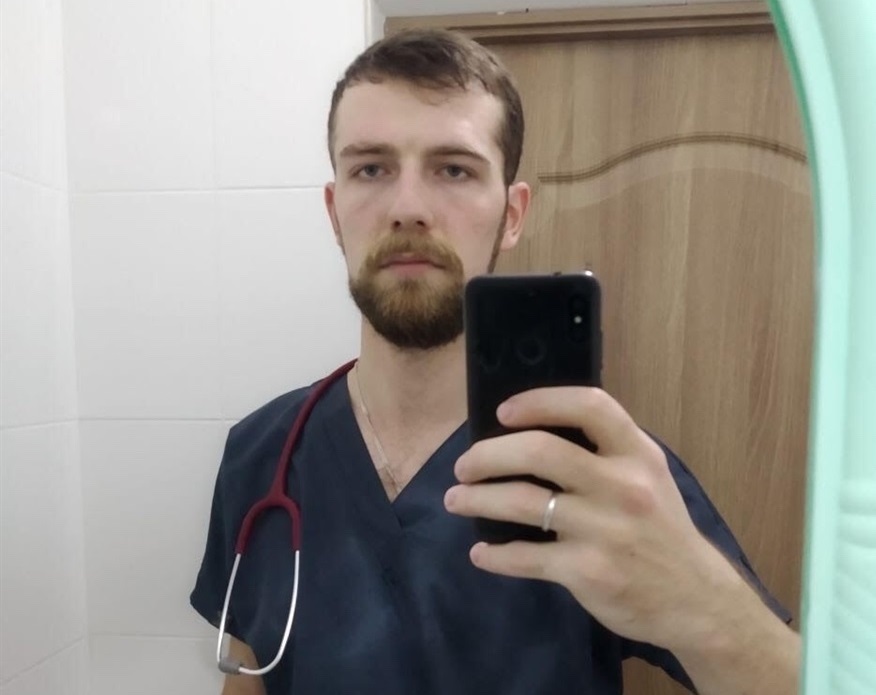 Andriy Serbyn before the evacuation from Mariupol
Andriy Serbyn before the evacuation from Mariupol
We couldn’t afford any heaters because our electricity came from a diesel generator. Diesel fuel was scarce, and we had to use it sparingly. The generator had been in the hospital even before the war, and we burnt the pre-war resources of diesel fuel in two days. While the fuel stations were still working in the first days of the war, the hospital administration bought diesel fuel; then, our military brought some in three or four times.
After the recovery, the patients stayed in the hospital. They filled the generator up and maintained its constant work. However, on March 21, as we were leaving, the chief doctor said, “The diesel fuel will last the generator about 3-4 hours of work.”
There were two fan heaters in the entire hospital. These were in the ORs, and we switched them on only during the surgery. The windows in the hospital OR were smashed after the first shellings, so we moved to the pre-op rooms, as they were more or less safe, meeting the requirement of two walls.
As it was cold, we put on all the clothes we had. We also put anti-COVID overalls on top of that (before the war, COVID patients had been treated there). Firstly, it protected the clothes from blood, vomit, and other bodily fluids everything around was covered in. Secondly, they seemed to keep in heat better.
However, staying in the OR for a long time, we were so cold that both doctors and junior medical staff often got into an uncontrolled state. It was hard on everyone. Women couldn’t stand it; they would go somewhere, wrap themselves up in a blanket and sit, trying to get warm. That is if the situation in the OR allowed them to do so. It was on March 23, in Tokmak, that we got warm for the first time.
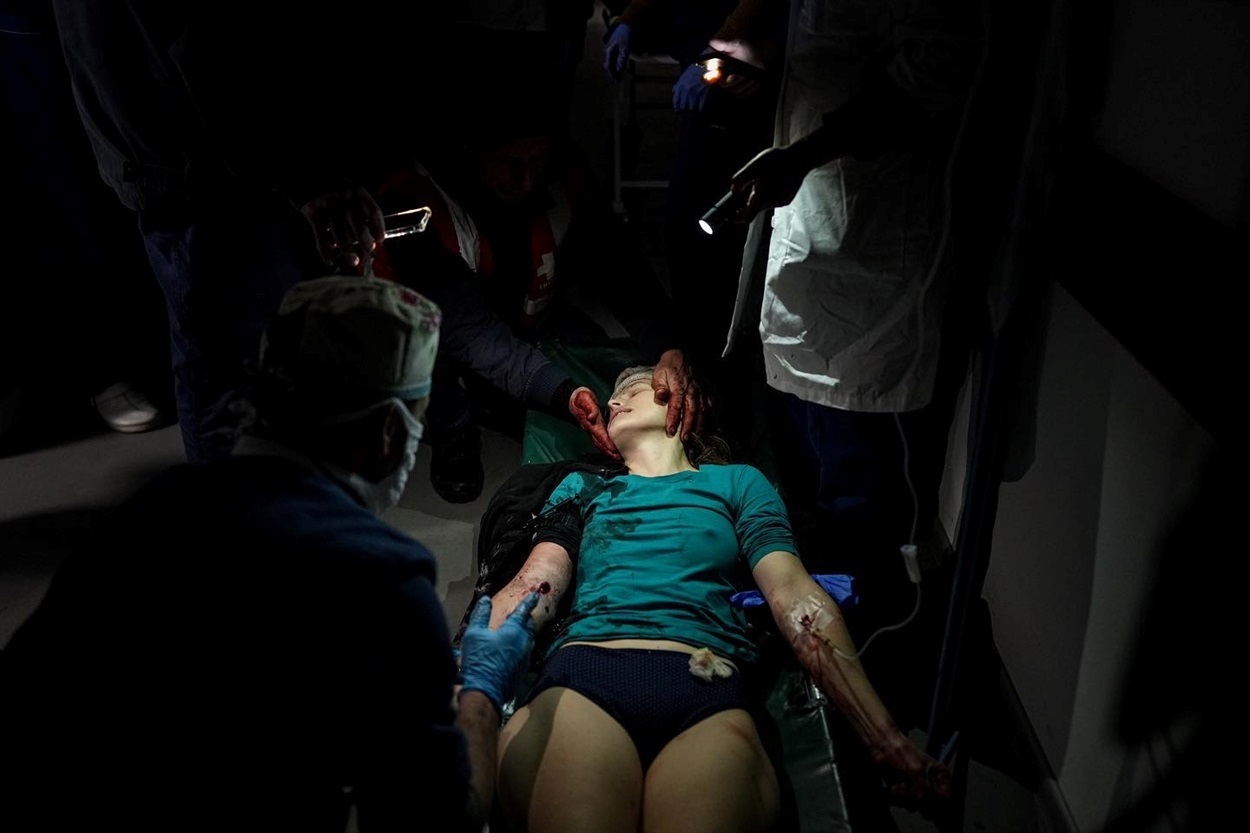 Copyright: Yevhen Maloletka, АР
Copyright: Yevhen Maloletka, АР
At the edge of starvation
The shops were working approximately until March 2, and you could take the risk of running out and grabbing something of no nutritional value, that hadn’t yet been sold out, like chips or olives, from the empty shelves of the ATB [a supermarket].
On March 1, we risked a short field trip and bought four loaves of bread. We made this bread last us till the middle of March. After that, we didn’t have any bread anymore.
There was a kitchen block with food resources in the hospital. This food was divided between the departments and cooked in crockpots while surgeries were performed, the generator was on, and there was electricity. Of course, meals were extremely small and very lean.
The limited resources of food were aggravated by the problem of cooking large volumes. There were only two crockpots in our department, and 20 people had to be fed. So, the portions were very small.
Nobody liked these field trips. When we drove up to the drill hole, which was in the yard of a private house, there always were huge lines. Actually, this was the only place to get drinking water. Hospital workers were let through ahead of the line.
Those who wouldn’t risk a trip to get water took it from sewage collector and boiled it, but it still stank and had a foul taste.
Some time on March 10, we operated on a patient whose relatives brought us a box of chicken necks in gratitude. Frankly speaking, I had never eaten things like that before. But at that moment, a somewhat forgotten taste of meat encouraged our staff immensely. We boiled, stewed, and fried those necks. Nobody liked them particularly, of course, but everybody ate them.
In general, we were not starving, of course. We definitely had two meals a day. But, considering the cold, work, stress, the growing awareness of the diminishing food resources and the endlessness of the siege, we had a very reverential attitude to food.
 The lines for water in Mariupol. Copyright: Yevhen Malolietka, АР
The lines for water in Mariupol. Copyright: Yevhen Malolietka, АР
More survivors than dead bodies
There is a notion of “a golden hour” in medical practice, which means that after a trauma, a patient has to receive assistance as soon as possible. Nobody from Mariupol was brought to us within the “golden hour”.
There were people lying in the street with their legs torn off for several days before someone would find them and send them to us. There were such blood losses that it was unclear how a person survived the surgery.
I can’t give you the exact figures, but it seems to me that every fifth person died after being brought in for medical assistance. It was surprising for me because in conditions of no water or electricity, without the entire staff of specialists, with periodic massive admissions when there were more wounded than medical workers, there were still more survivors than the ones we lost.
At first, the wounded were brought in by ambulances. Then, I think, on March 7–8, there were massive shellings, the connection with the Left Bank was cut off, and the wounded started coming in various ways.
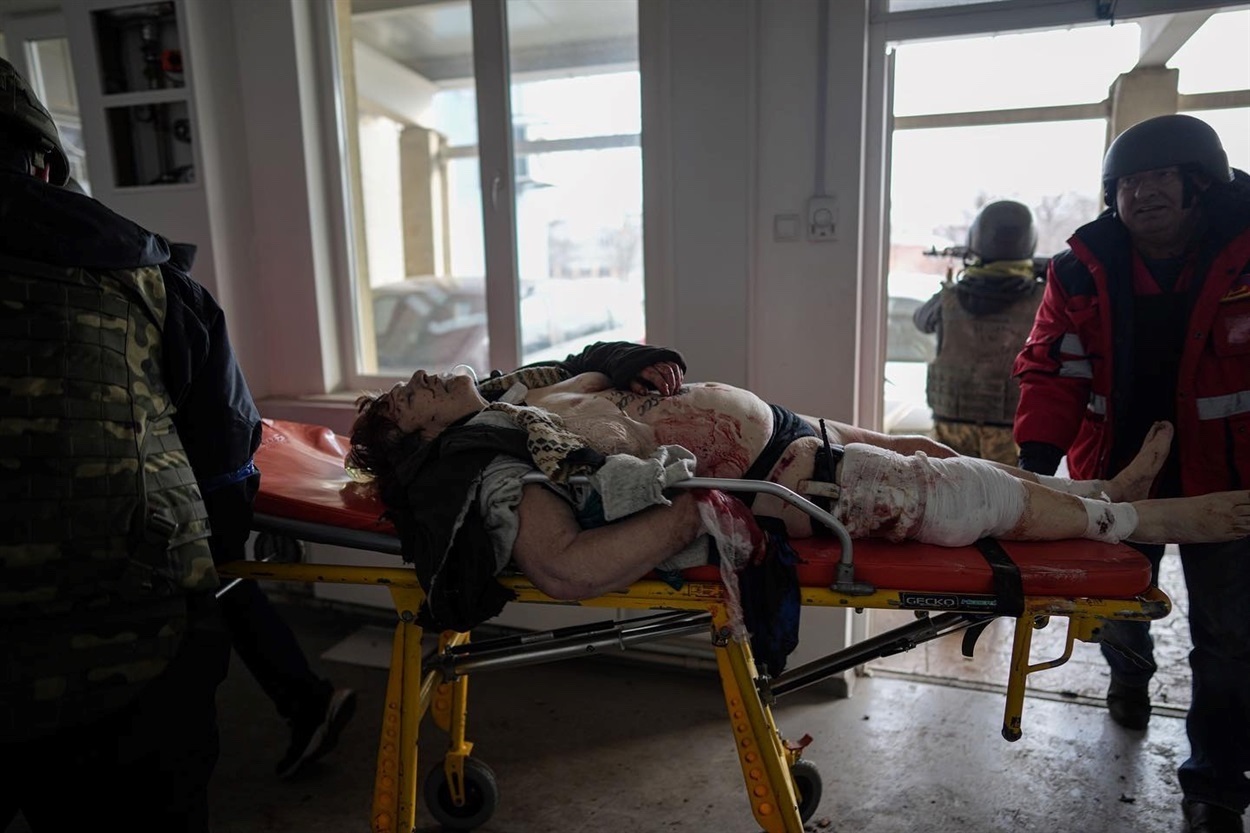 Copyright: Yevhen Malolietka, АР
Copyright: Yevhen Malolietka, АР
The wounded were brought in by some civilian vehicles; many times, the military would bring the civilians. There was one reinforced car; it didn’t seem to be military. It was marked with red medical crosses. This car used to bring many people to us. The locals would drag the wounded on the ground on doors or blankets. The ones with intact legs would come on their own.
On March 20, we had only one wounded person. That was also the day when one person was shot dead. This was Dr. Kazantsev. One of the hospital’s old-timers. He was over 60; he worked as head of the department of children’s infectious diseases. On the morning of March 20, the doctor took a kettle and left the building of his department to take the boiled water to the shelter at the neighboring infectious diseases building, where people were staying.
The distance between the two buildings is 32 ft. There was an explosion near the one Anatoliy Borysovych was going to. He was thrown back to his building by the blast wave. The kettle remained near the crater. Anatoliy Borysovych died of brain trauma. We buried him in the flower bed between the two buildings – two meters away from his workplace.
The rest of the dead were placed into bags and carried into the yard. They were lying at the hospital wall. Pursuant to the rules, the forensic experts were to give their conclusions on the cause of death of each person. The bodies could be buried only after that.
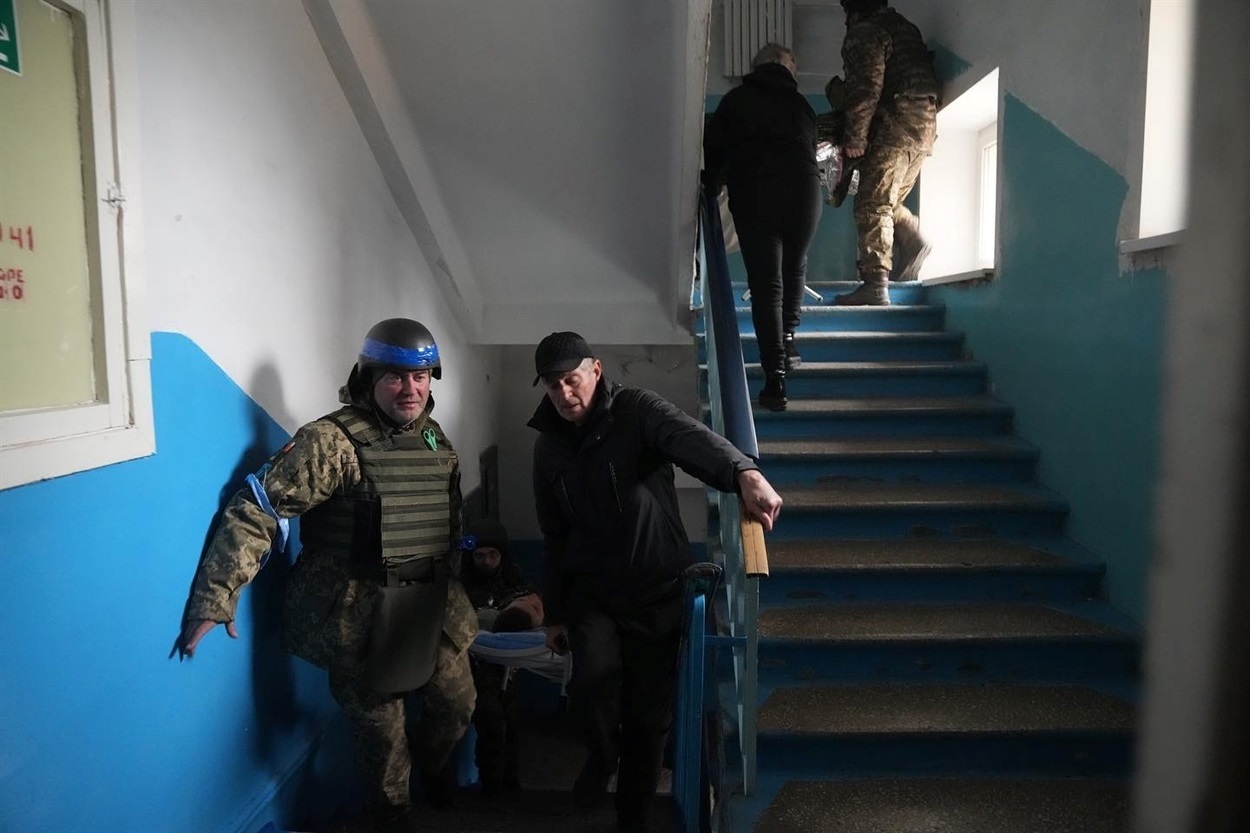 The wounded were brought on doors or carpets or carried in arms. Copyright: Yevhen Malolietka, АР
The wounded were brought on doors or carpets or carried in arms. Copyright: Yevhen Malolietka, АР
 Hospitals under constant shelling. Copyright: Yevhen Malolietka, АР
Hospitals under constant shelling. Copyright: Yevhen Malolietka, АР
Helping children raised morale
During the entire period, we had about 15 wounded children. The most severe cases were brain injuries. Our hospital didn’t specialize in neuro trauma, so we didn’t have any neurosurgeons.
I remember the first girl very well. Her name was Ania. There was an explosion; a wheel was blown away from the car and hit the back of the girl’s head.
Everybody attended to the child right away. One of our young traumatologists did a decompressive craniectomy. He had performed a surgery that was outside his sphere of professional competence. It was as if a general practitioner conducted an appendectomy.
After the surgery, the girl had a difficult rehabilitation period. She stayed on artificial lung ventilation for five days. Practically all the devices worked on electricity. Naturally, there was no electricity. But we had five battery-powered devices. We charged them while the generator was working. When one apparatus ran down, we would quickly switch the girl to another, and so on. It was an absolutely extraordinary situation.
Then, we managed to wean Ania off the respiratory support, and she started breathing independently. On March 18, we saw the signs of neurological recovery. On March 21, she regained her conscience and could even maintain minimal contact at the “yes/no” level. We were very proud that we had managed to save her.
While Ania was still on artificial ventilation, we admitted another child of six. He had a head trauma, too. After the surgery, he had a very good neurological recovery. Then I saw a photo of him and his grandmother in Mariupol public chats. They stayed in the city.
Our help to children, their recovery after surgeries conducted in these conditions – these were the episodes raising our morale.
There is a notion of “triaging” which means the medical sorting of patients. Some categories of patients are not provided medical aid: agonal, extremely severe, those highly unlikely to survive a surgery. It is considered inappropriate to attend to them first because someone else, having a less severe trauma but higher chances of survival, may not receive medical assistance and die. It was hard to make the decision like, “That’s it, we are not attending to this patient anymore.”
After the shelling, a mother, a grandmother, and a one-year-old child went to the yard to cook their meal. A shell hit the yard. Everybody had head injuries. The mother had mere scratches. The grandmother had a rather severe trauma to her face skull, and her eye was badly injured. As for the boy, a piece of shrapnel hit his head. The entrance-exit wound went through the front part of his skull. When he was brought in, he was still alive. The content of his skull was on the outside. Of course, the mother refused to accept that there were no chances. We anesthetized the child. Unfortunately, that was all we could do to help. The one-year-old child died 15 minutes after his admission to the hospital.
One day, we received two children, aged 10 and 16. As far as I understood, they were not related but brought from the same city area. They had the most severe brain injuries. We couldn’t help them. We merely anesthetized them. We put one on top of the other. We covered them with a blanket. That was the end.
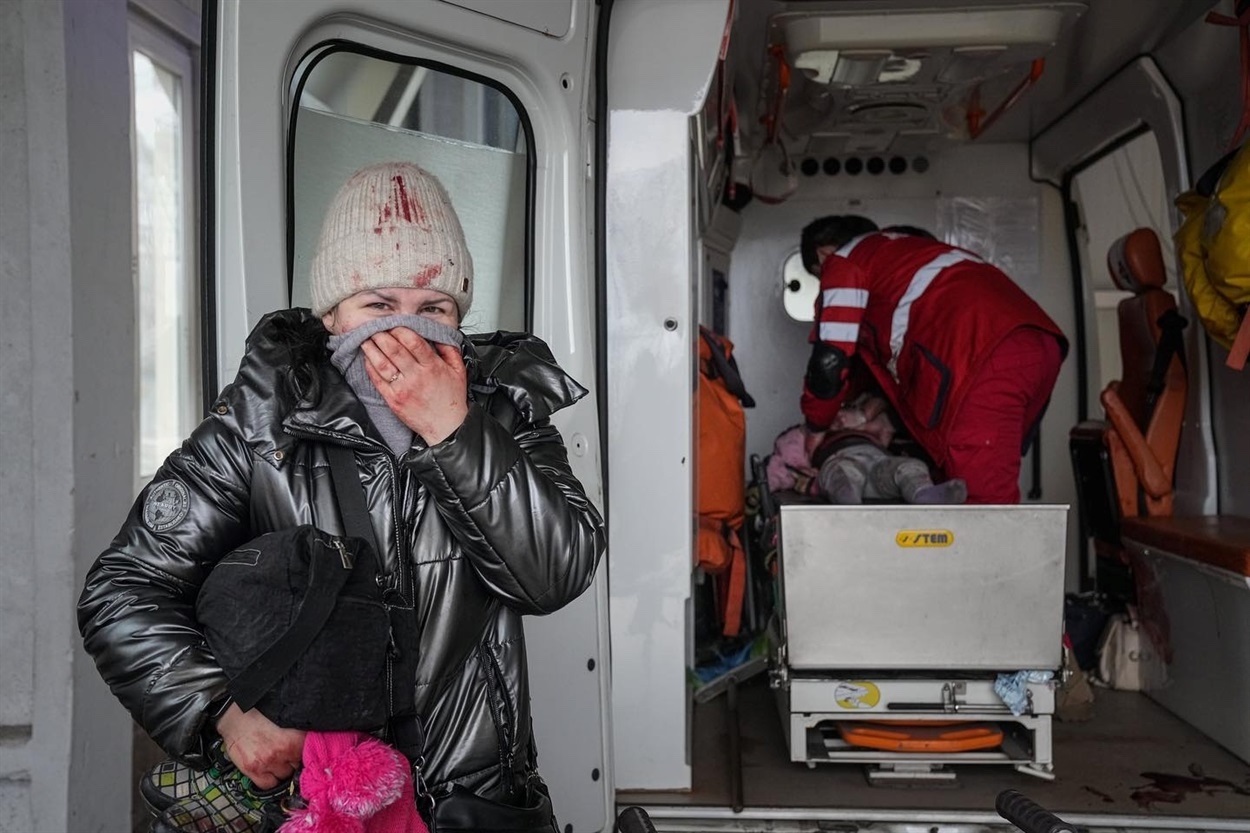 A dead child in Mariupol. Copyright: Yevhen Malolietka, АР
A dead child in Mariupol. Copyright: Yevhen Malolietka, АР
 A dead child in Mariupol. Copyright: Yevhen Malolietka, АР
A dead child in Mariupol. Copyright: Yevhen Malolietka, АР
Medicines, obtained with a crow-bar
Of course, the hospital had its supplies of medicines. However, when the gravity of the situation was getting clear to us, and the pharmacies stopped their work, people with higher medical education grouped together, took some metal things with them, and broke into the pharmacies located in the territory of the hospital.
The narcotic drugs for anesthesia were the first to end; there were also significant problems with infusion solutions. We ran out of blood, so we did blood transfusion only when we realized that a patient would definitely die without it. By March 20, we practically had no drugs, nothing to provide medical assistance with.
Informational vacuum
We didn’t think about evacuation – we dreamed about it. However, since the mobile signal vanished on March 5–6, we were in an informational vacuum – we knew neither about any “green corridors” nor what was generally happening.
In addition, we constantly had some wounded people, brought with a typical story, “We heard it somewhere, someone said that there would be a “green corridor”, and we went there. We were shelled.” And – there you were – someone had a hole in his abdomen, someone’s arm was torn off. Someone was killed on the spot.
This vacuum concerned not only our hospital but the entire Left Bank.
On March 16, someone managed to get the weakest mobile signal of Kyivstar on the fourth floor. From that time on, there was a pilgrimage to that place. Everyone would go there, stick their arms out, trying to catch the mobile signal and say something to their relatives who had already buried us several times over.
So, when we finally arranged some communication, only by phone, we started getting from our relatives more or less up-to-date information about safe routes to leave the city. We started thinking about evacuation.
We were consciously heading to Ukraine. None of us wanted to stay, work, or live in the “DNR” or Russia (on April 7, it was reported that the Russian invaders forcibly took the staff and patients of the Mariupol City Hospital No. 4 to the occupied territory of Ukraine. The destiny of people is not known – Svoi).
The driver said, “Andriy, jump out!” And I realized why
On March 18, our district was under especially intense and aimed fire. An outpatient clinic across the street was on fire. It was burning so cheerfully that we looked at it for two days, thinking, “What if we catch fire?”
And the very thought that we might not only be hit but catch a fire made us rapidly consolidate everyone’s efforts towards evacuation.
There were several unsuccessful attempts to leave. “Unsuccessful” means we failed to leave the Left Bank. Now I realize that we should have considered them successful, as each time all the team members, leaving the place, came back alive. Not everybody was so lucky.
The main problem was that the “green corridor” started at the exit from Mariupol. We had to get to it. The Left Bank of Mariupol is closer to Novoazovsk and the so-called “DNR”. What we needed was the opposite exit from the city, the western one, and we had to cross the entire Mariupol to get to it.
We made our successful attempt on March 21. We made a line of seven cars belonging to our employees. On the previous day, the acquaintance of our colleague had left by that route and told us about it.
We had to go along Pashkovskoho street to Naberezhnaya. Stop at the mine barrier. Take a turn just before it and go farther along “guerilla paths”, jumping over border stones, going around toppled over concrete blocks, going through the eastern entrance gates of Azovsteel Plant standing in ruins.
That highway had six tracks. There was not a single square meter without a huge toppled over concrete block. The road went through Azovsteel, which was shelled non-stop. Literally.
In one place, we had to go along the streetcar line, then leave them to get to the bridge. There was a tiny slit between the barricade made of cars and the bridge fence. There was enough room for an average car to squeeze by with folded mirrors. Those who could fold them up did so, and the others went as they were. Our entire line got through that opening.
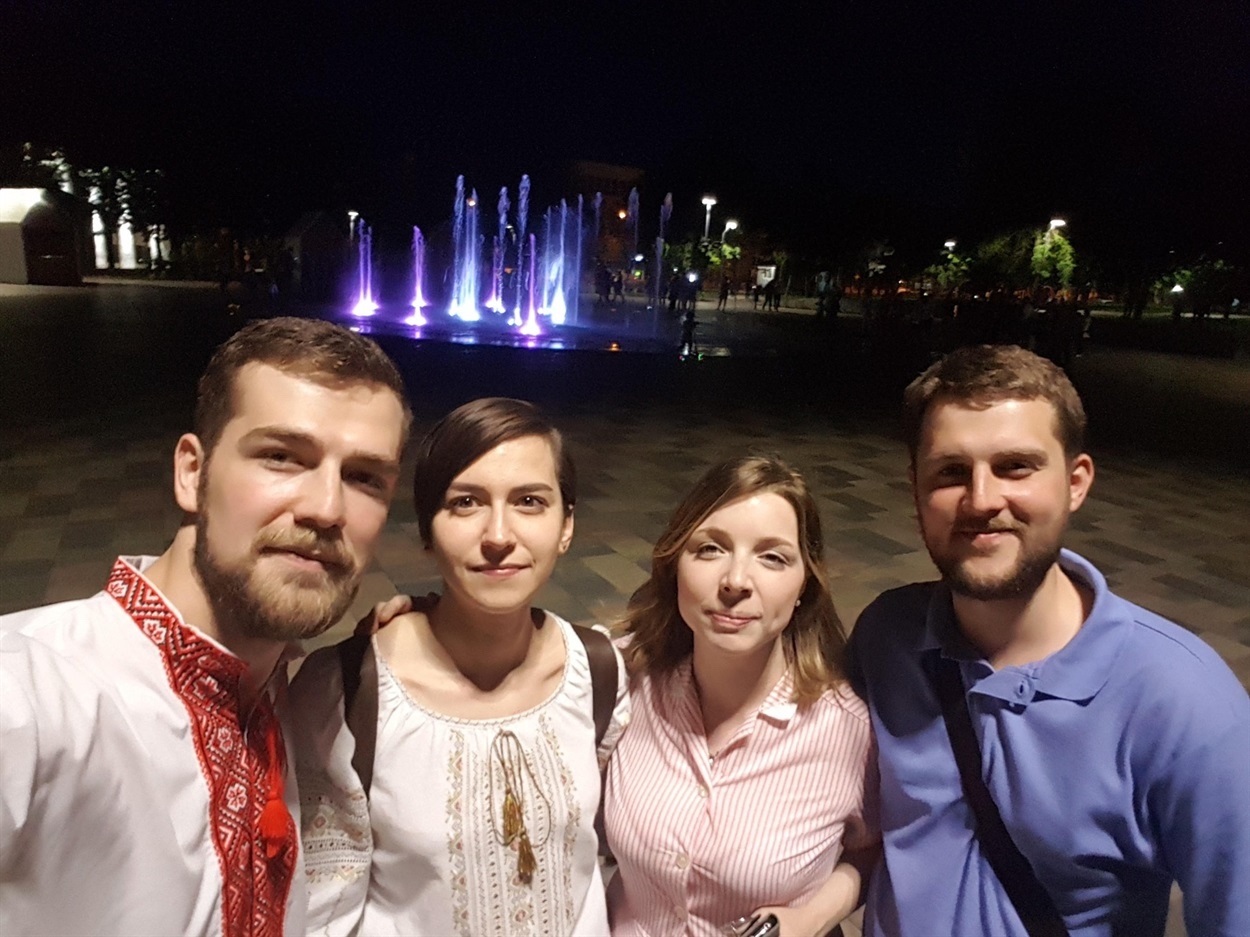 Andriy and his friends in peaceful Mariupol. Photo: Courtesy of Andriy Serbyn
Andriy and his friends in peaceful Mariupol. Photo: Courtesy of Andriy Serbyn
At one point, we were stopped by a fallen pole with the line of trolleybus electricity transmission. And this cable, on which everything was mounted, was hanging across the road. While going past it, the car would not just touch it but have something torn away.
I was in the first car. We came up, realized that it was impossible to run around it, and the driver said, “Andriukha, jump out!” I understood what he meant. I jumped out, lifted the metallic cable above my head, and let the entire line pass under it. I let go of the cable and ran to our car quickly. They were driving at low speed for me to jump into the car on the fly.
There was our tank not far from the central entrance gate and a crater next to it, two highway tracks long and waist-deep. The cars couldn’t move along the road. The drivers drove between the crater and the tank, jumping over the border stones. That’s how we went through the central gate. There used to be another bridge. By that time, it had already been destroyed.
However, there was one more bridge nearby; it was usually called Old or Humpy. Frankly speaking, in my nearly four years in Mariupol, I had never seen anyone driving on it. I thought people could only stand on it with a fishing rod because it would not stand anything heavier than a cart. We drove along it.
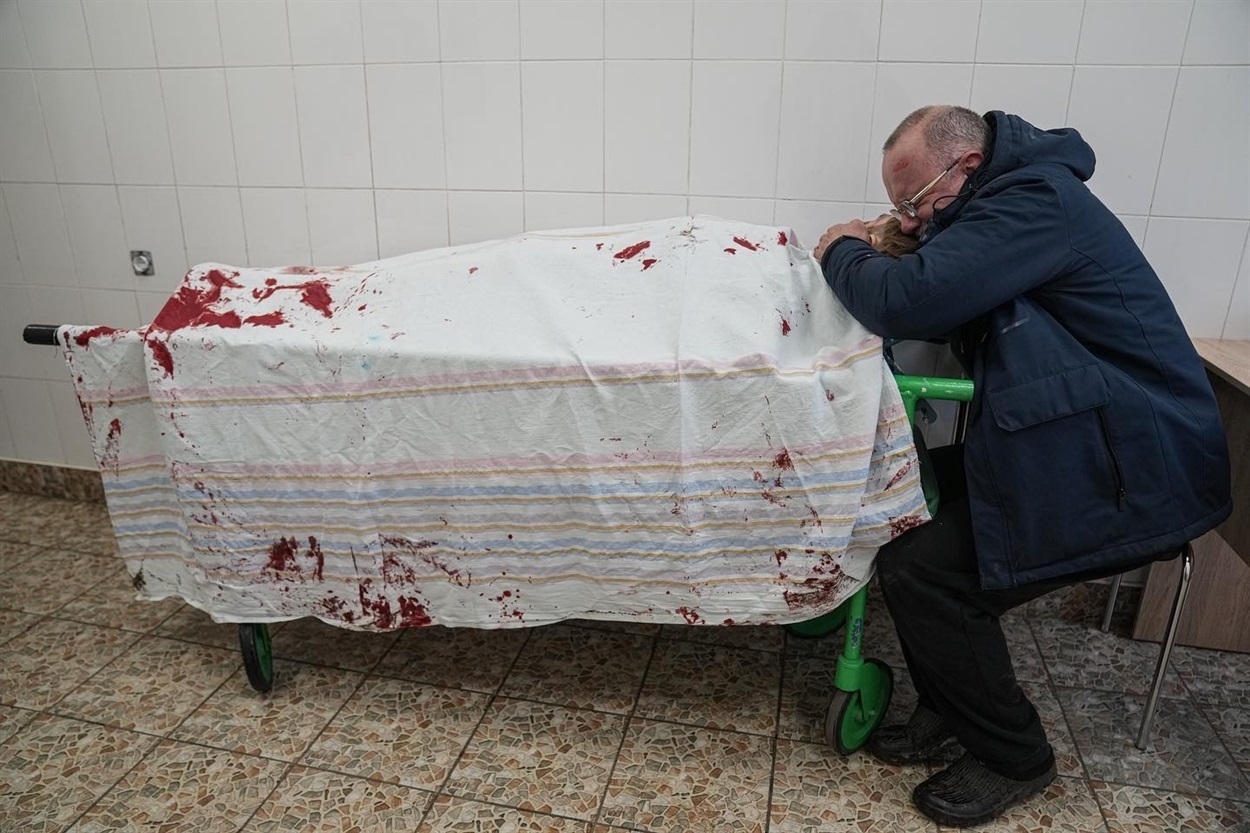 The father crying over his dead child. Copyright: Yevhen Malolietka, АР
The father crying over his dead child. Copyright: Yevhen Malolietka, АР
After that, the trip was relatively safe. As a two-times IDP, I knew this routine well: the checkpoints, the communication with “nice” people with submachine guns. At the Russian checkpoints, we were asked to get undressed – they were looking for tattoos or signs of carrying and using weapons.
There was a car with a half-full fuel tank in our line. We all knew that we would have to tow it. He was out of fuel 20 kilometers from Manhush. We towed him to Tokmak. Nobody even thought of telling him that he should not have left without a full fuel tank.
The fuel delivery was organized in Tokmak. We filled up and went to Zaporizhzhia. On March 26, I was in the Dnipropetrovsk region. On March 30, I went to look for a job as a doctor.
We left, but our patients stayed
Have I become a different person? In Mariupol, I had to work, save, make decisions, fight, get warm, and eat something eventually. And I lived, worked, was a member of surgery teams all the time, and tried not to think about it. My thoughts after Mariupol are quite a different story.
On the day after our departure, there was a direct hit on the fourth floor of the hospital, where my colleagues and I had been almost all the time. Several doctors were killed by this explosion.
The situation – we left, and our patients stayed – is very painful. Every doctor forms an emotional bond with the patient; during the treatment process, he or she is not a stranger anymore.
We were convincing ourselves that we had done everything we could have done, especially considering the circumstances, “Another day or two and we would have nothing left. We would have no surgical sutures, and no alcohol for cleaning. Nothing to provide medical assistance.” Nevertheless, we were freaked out to abandon our patients and leave. Doctors don’t do that. They usually don’t. Still, I can’t blame myself for having decided to flee Mariupol, because it was a normal and right thing to do. However, everyone who left with me still has a shade of doubt regarding this decision from the ethical standpoint.
























